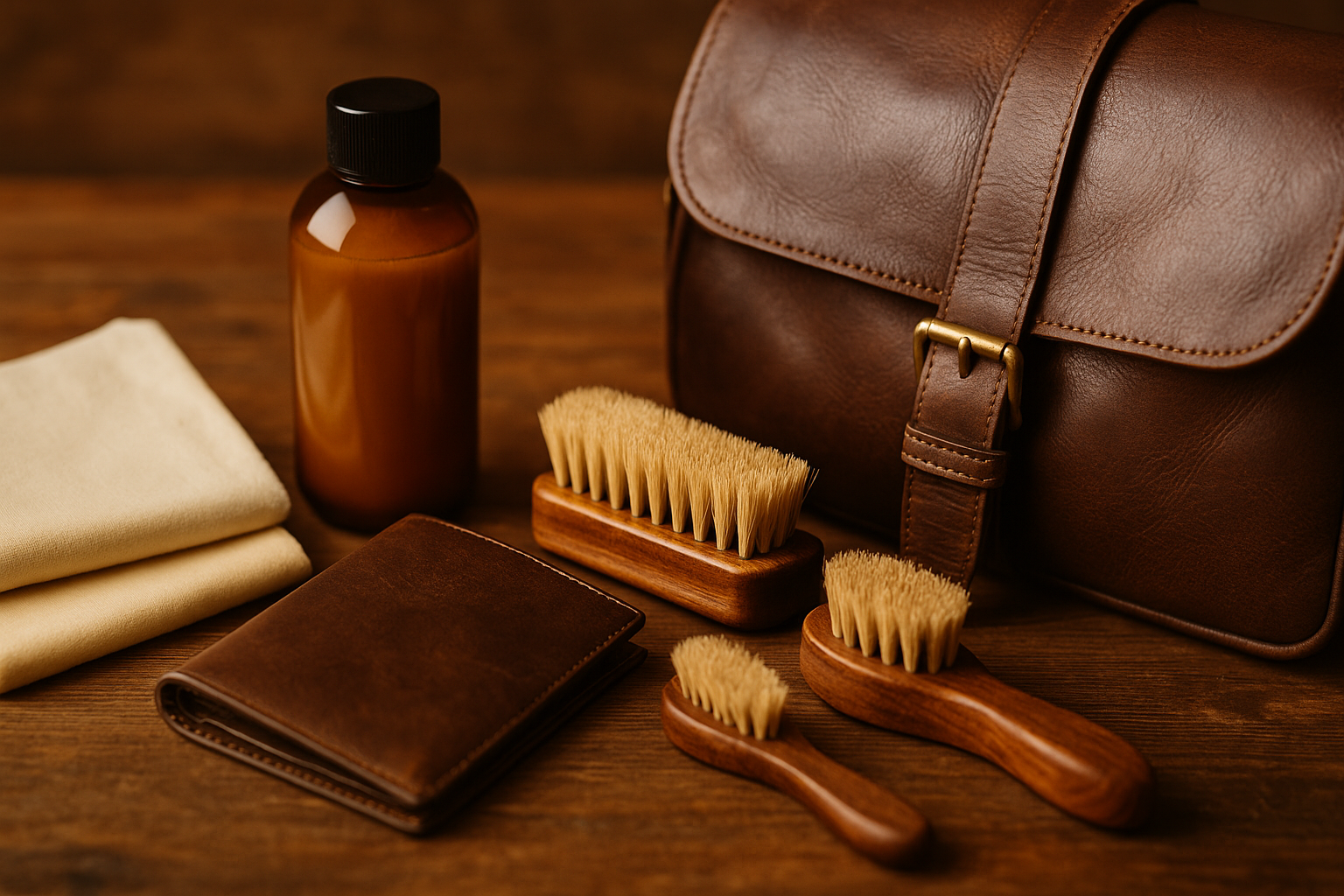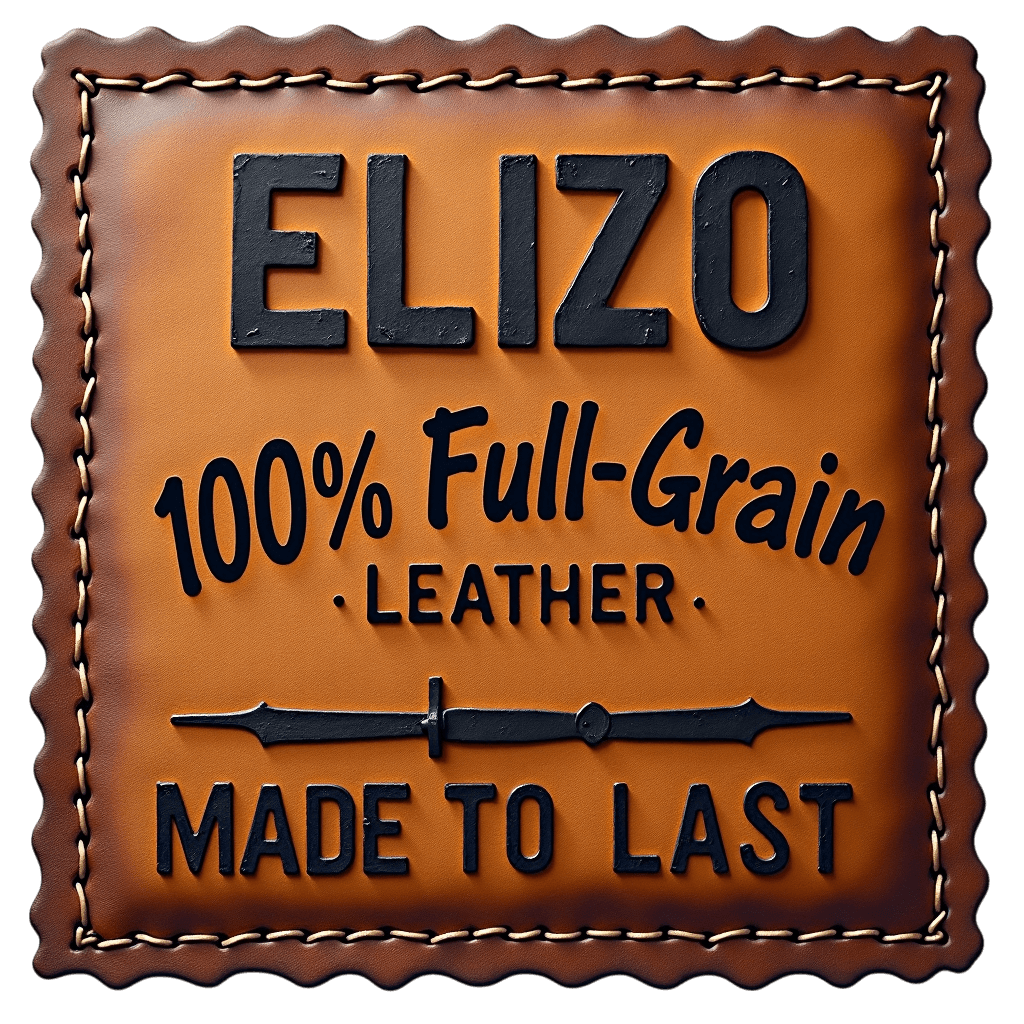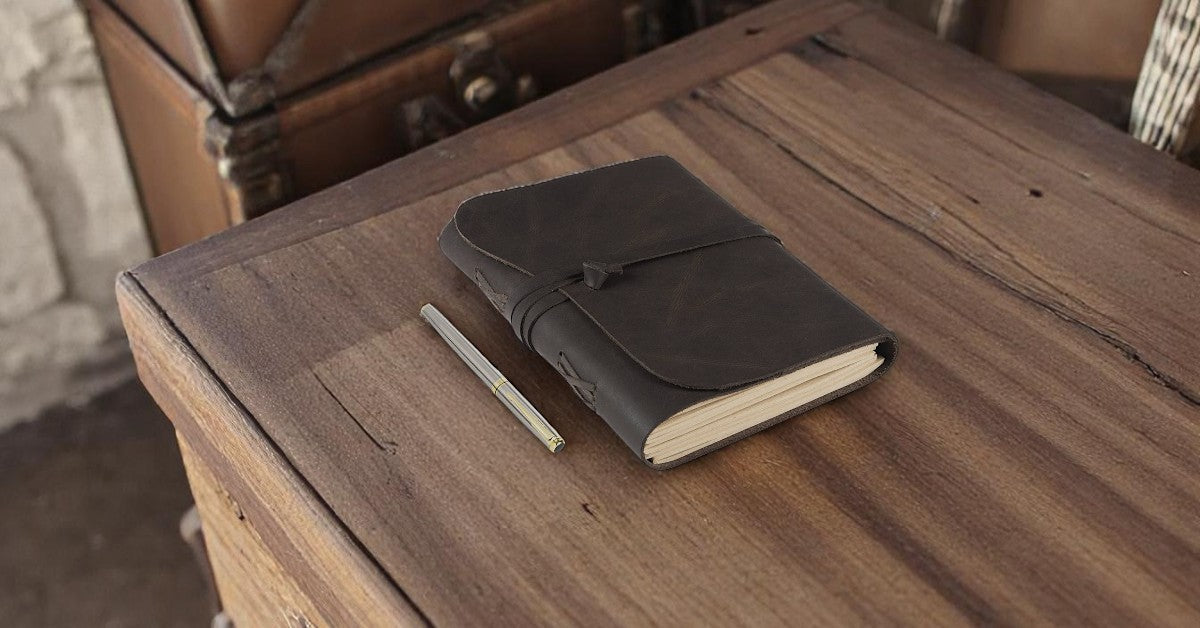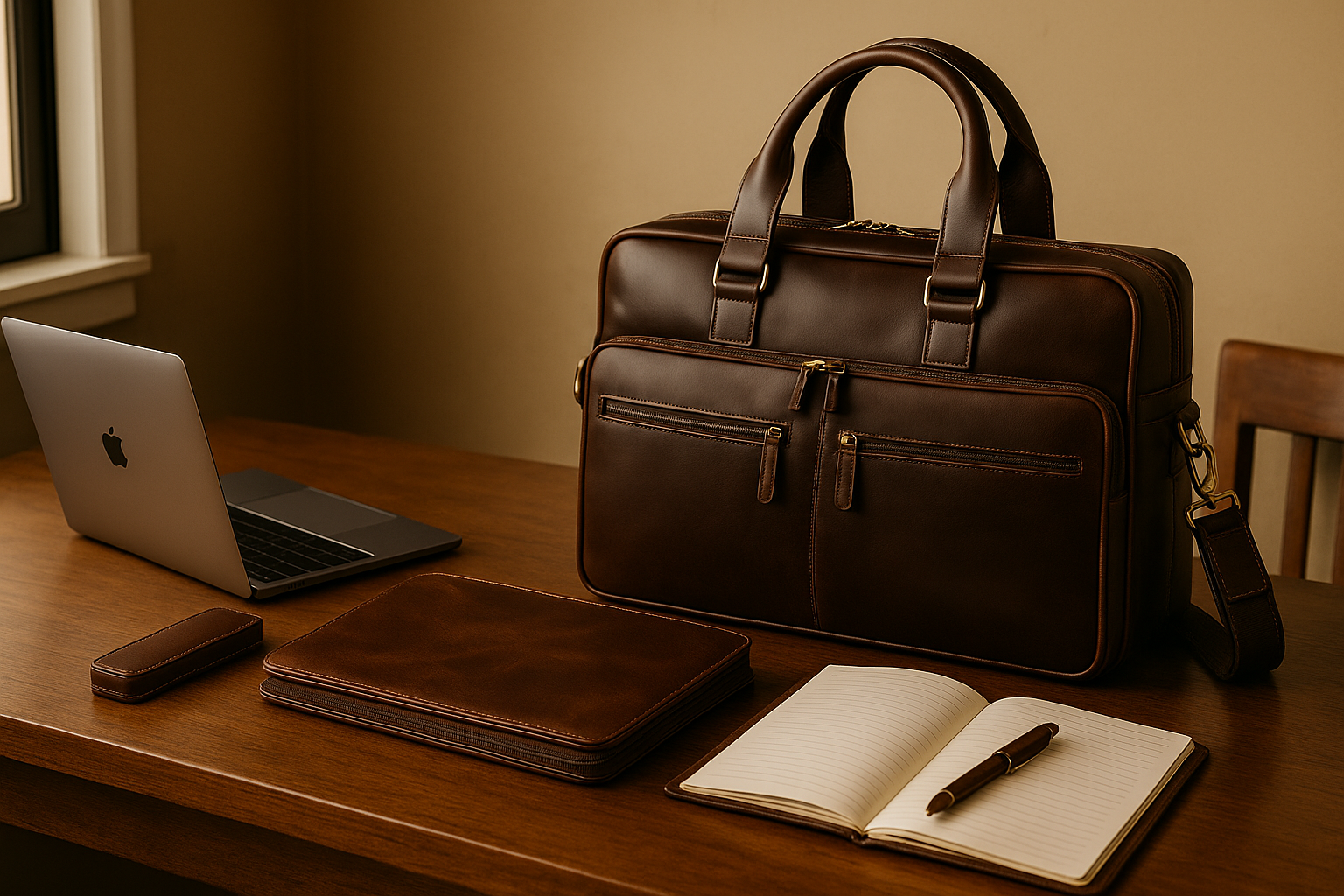
The Complete Guide to Leather Care: Keep Your Investment Looking New

Quality leather goods represent more than just accessories—they're investments that can last generations when properly cared for. Whether you own a handcrafted leather wallet, a premium leather tote bag, or a personalized leather portfolio, understanding proper care techniques will ensure your pieces develop that coveted patina while maintaining their structural integrity.
Unlike synthetic materials that simply wear out, genuine leather actually improves with age when treated correctly. The key lies in understanding leather's unique properties and implementing a consistent care routine that protects against common threats like moisture damage, cracking, and color fading.
Understanding Your Leather Type: The Foundation of Proper Care
Before diving into care techniques, it's crucial to identify what type of leather you're working with. Different leather types require specific approaches, and using the wrong products can cause irreversible damage.
Full-Grain Leather
Full-grain leather, the highest quality option, retains the complete grain surface and develops beautiful patina over time. This type is found in premium leather bags and executive portfolios. It's naturally resistant to moisture but benefits from regular conditioning to prevent cracking. Our full-grain leather collection showcases the exceptional quality and durability of this premium material.
Top-Grain Leather
Top-grain leather has been lightly sanded to remove imperfections, creating a more uniform appearance. While still high-quality, it requires slightly more protection than full-grain leather. Many leather wallets and everyday carry items use this type.
Corrected-Grain Leather
This leather has been heavily processed and coated with a protective finish. While more affordable, it requires gentler care products to avoid damaging the surface coating.
Suede and Nubuck
These textured leathers require specialized care due to their delicate surface. Traditional leather conditioners can ruin the texture, so specific suede care products are essential.
Essential Leather Care Supplies: Building Your Toolkit
Proper leather care starts with having the right tools and products. Investing in quality supplies will pay dividends in extending your leather goods' lifespan.
Cleaning Essentials
- Soft microfiber cloths – Multiple cloths for different stages of care
- Leather cleaner – pH-balanced formulas designed specifically for leather
- Soft-bristled brush – For removing surface dirt and debris
- Cotton swabs – For detailed cleaning around stitching and hardware
Conditioning and Protection
- Quality leather conditioner – Look for products with natural oils and waxes
- Leather protector spray – For adding water resistance
- Colorless shoe cream – For maintaining color and shine
- Leather balm – For intensive treatment of dry or cracked leather
The Step-by-Step Leather Care Process
Caring for leather isn't complicated, but it does require patience and attention to detail. Follow this comprehensive process to keep your leather accessories in pristine condition.
Step 1: Initial Assessment and Preparation
Before applying any products, examine your leather item thoroughly. Look for:
- Stains or discoloration
- Scratches or scuff marks
- Areas of dryness or cracking
- Hardware condition
- Stitching integrity
Remove all contents from bags, wallets, and portfolios. If dealing with a leather travel bag or toiletry bag, ensure all compartments are empty and accessible.
Step 2: Surface Cleaning
Start with dry cleaning using a soft brush to remove surface dirt and debris. Pay special attention to creases and areas around hardware where dirt accumulates. For textured leathers like those found on some leather desk pads, use gentle circular motions to avoid damaging the surface.
Next, use a slightly damp microfiber cloth to wipe down the entire surface. Avoid soaking the leather—moisture should be minimal. For stubborn dirt, apply a small amount of leather cleaner to your cloth, not directly to the leather.
Step 3: Deep Cleaning (When Necessary)
For heavily soiled items or monthly deep cleaning, use a specialized leather cleaner. Apply a small amount to a clean cloth and work in sections, using circular motions. Always test the cleaner on an inconspicuous area first.
After cleaning, use a clean, damp cloth to remove any cleaner residue. Allow the leather to air dry completely before proceeding—this typically takes 30-60 minutes depending on humidity and leather thickness.
Step 4: Conditioning for Longevity
Conditioning is perhaps the most critical step in leather care. Quality conditioner penetrates the leather fibers, replacing natural oils that evaporate over time. This prevents cracking and maintains flexibility.
Apply conditioner sparingly using a clean cloth, working it into the leather with gentle circular motions. Pay extra attention to stress points like corners on leather wallets and handles on leather bags. Avoid over-conditioning, which can make leather soft and lose its shape.
Allow the conditioner to penetrate for 15-20 minutes, then buff away any excess with a clean cloth. The leather should feel supple but not greasy.
Step 5: Protection and Finishing
For items exposed to weather or heavy use, apply a leather protector spray. Hold the bottle 6-8 inches away and apply in light, even coats. This is particularly important for travel accessories and daily carry items.
For dress leather items like executive portfolios, a thin application of colorless cream can provide additional protection and enhance the natural luster.
Seasonal Care: Adapting to Weather Changes
Leather responds to environmental conditions, requiring adjusted care routines throughout the year.
Summer Care
High temperatures and humidity can cause leather to become overly soft or develop mold. Ensure proper ventilation for stored items and avoid leaving leather goods in hot cars. Condition less frequently, as heat can cause over-absorption of products.
Winter Care
Cold, dry air can cause leather to crack. Increase conditioning frequency and consider using a humidifier in storage areas. Salt from winter roads is particularly damaging—clean it off immediately and apply extra protection to items exposed to harsh conditions.
Transition Seasons
Spring and fall are ideal times for comprehensive leather care routines. The moderate temperatures and humidity levels allow products to penetrate properly without weather-related complications.
Common Leather Problems and Solutions
Even with proper care, leather goods can develop issues. Here's how to address the most common problems:
Water Stains and Spots
Water spots are among the most common leather problems. For fresh water damage, blot immediately with a clean cloth—never rub. Allow to air dry naturally, then condition the area. For set-in water stains, professional restoration may be necessary.
Ink Stains
Act quickly with ink stains. Blot excess ink immediately, then apply a small amount of rubbing alcohol to a cotton swab and gently dab the stain. Work from the outside in to prevent spreading. Follow up with conditioning to prevent drying.
Scratches and Scuffs
Minor scratches often disappear with conditioning—the oils fill in shallow marks. For deeper scratches, use a leather repair cream that matches your item's color. Apply sparingly and blend carefully.
Cracking and Drying
Dry, cracked leather needs intensive treatment. Apply a leather balm or heavy conditioner, allowing it to penetrate for several hours or overnight. Repeat the process several times for severely damaged leather.
Storage Best Practices: Preserving Your Investment
Proper storage is crucial for maintaining leather goods during periods of non-use.
Climate Control
Store leather in cool, dry places with good air circulation. Ideal conditions are 60-70°F with 45-55% humidity. Avoid basements, attics, and other areas with extreme temperature fluctuations.
Shape Retention
Stuff bags and larger items with acid-free tissue paper to maintain shape. For leather portfolios and similar flat items, store them flat or slightly elevated to prevent warping.
Protection from Light
Direct sunlight can fade and dry leather. Store items in dust bags or boxes, especially colored leathers which are more susceptible to fading.
Avoiding Plastic
Never store leather in plastic bags or airtight containers. Leather needs to breathe, and trapped moisture can lead to mold and mildew growth.
Professional vs. DIY Care: When to Seek Expert Help
While regular maintenance can be done at home, certain situations require professional intervention:
Professional Cleaning Needed For:
- Extensive mold or mildew damage
- Large or set-in stains
- Color restoration
- Structural repairs
- Vintage or valuable pieces
DIY Maintenance Suitable For:
- Regular cleaning and conditioning
- Minor scratch treatment
- Basic stain removal
- Preventive care
Building a Leather Care Routine: Consistency is Key
Developing a regular care routine prevents problems before they start and ensures your leather goods age gracefully.
Daily Care
For frequently used items like everyday carry wallets and work bags, perform quick daily maintenance by wiping away surface dirt and allowing the leather to air out.
Weekly Maintenance
Inspect your leather goods weekly for new damage or wear patterns. Address minor issues immediately before they become major problems.
Monthly Deep Care
Once monthly, perform thorough cleaning and conditioning. This is also an excellent time to rotate stored items and check on pieces not in regular use.
Seasonal Overhauls
Quarterly deep cleaning and protection renewal ensures your leather goods are prepared for changing weather conditions. This is also the ideal time for professional cleaning if needed.
Investment Protection: The Economics of Leather Care
Quality leather goods represent significant investments, and proper care protects that investment. A well-maintained leather bag or portfolio can last decades, making the cost per use incredibly low compared to frequently replaced alternatives.
Consider the cost of replacement versus the minimal expense of proper care products. A $20 conditioning kit can extend the life of a $200 wallet by years, representing exceptional value.
Conclusion: Your Leather's Lifetime Companion
Caring for leather goods isn't just about maintenance—it's about developing a relationship with materials that improve with age and attention. By understanding your leather type, implementing proper care techniques, and maintaining consistent routines, your leather accessories will serve you faithfully for years to come.
Remember that good leather care is an investment in both the longevity of your goods and the satisfaction of owning well-maintained, beautiful accessories. Start with basic cleaning and conditioning, build your skills gradually, and don't hesitate to seek professional help for valuable or severely damaged pieces.
Your leather goods are designed to be lifetime companions—give them the care they deserve, and they'll reward you with decades of reliable service and increasing beauty. For more information about caring for specific items or to explore our collection of premium leather goods, visit our warranty page for additional care guidelines.




